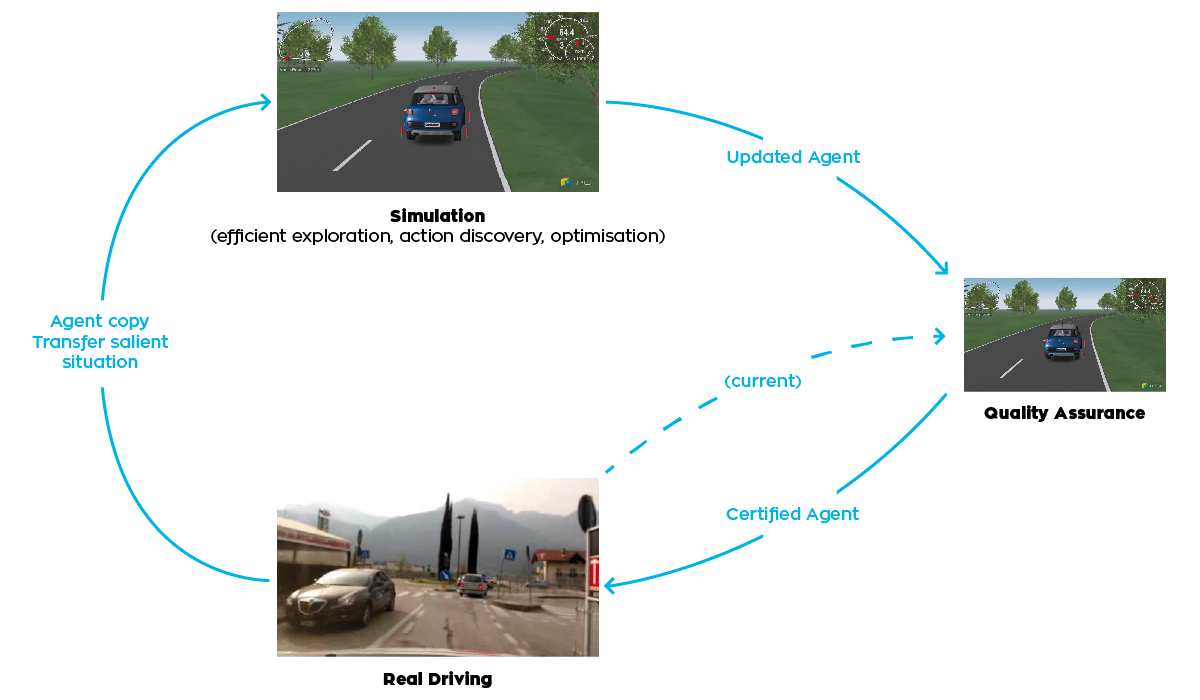Concept
Autonomous driving is a key technology in shaping future mobility. The expectations on autonomous driving are high. Automated cars will contribute to the efficiency of transport systems, improved road safety, new mobility paradigms, and environmental benefits. In addition, the concept of smart cities counts on automated cars as part of the transport system. Consequently, this topic is high on the agendas of the European Commission, the member states and the automotive industry. Beyond the societal impacts, the automotive industry is also a major economic factor for Europe.
However, to be adopted by the automotive industry and accepted by the society, automated driving technologies must achieve and demonstrate very high levels of reliability and safety. In view of the fact that the average human driver fatality rate is 1 in every 100 million miles, automated vehicles will provably have to better these figures.
Dreams4Cars concentrates its efforts on the core element of automated cars: the driving agent - the complex software system encompassing perception and action that controls the automated vehicle.
In the problematical and diverse scenarios of real roads this agent must be able to cope with situations that might happen once in one billion of miles (less than once in the lifetime of one single agent, as for humans). Perceiving the world is not enough: the agent must also act in very efficient ways.
Developing optimised sensorimotor strategies for rare events is thus the main objective of Dreams4Cars.
This is tackled by taking inspiration from human dreams. Dreams4Cars will research simulation mechanisms, which are “sleep” states comparable to mental imagery and dreams in humans, that allow the agents to recombine salient situations found in real driving, the “wake” state”. Imaginary situations are produced that in turn can be used for training the agents, optimising the existing sensorimotor strategies and discovering new ones.
The following figure gives a visual representation of this concept. Salient situations and the current driving agent are transferred into a virtual world where imaginary situations are produced and the agents can explore, discover and optimize their behaviours (a human directed quality assurance step –which is the current level of simulations used for vehicle control systems – is included in the figure to certify, and in our case also monitor, the evolution of the agent with dream cycles).
